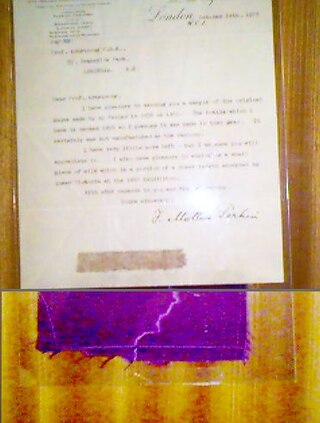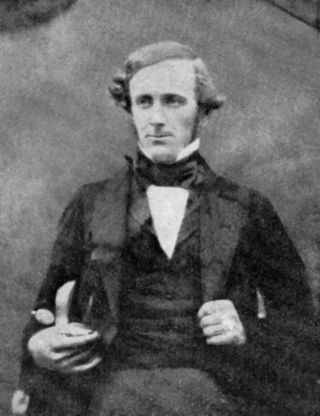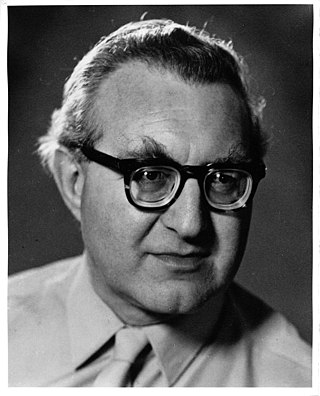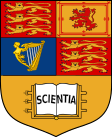
Imperial College London is a public research university in London, England. Its history began with Prince Albert, consort of Queen Victoria, who developed his vision for a cultural area that included the Royal Albert Hall, the Victoria and Albert Museum, the Natural History Museum and several royal colleges. In 1907, Imperial College London was established by royal charter, unifying the Royal College of Science, the Royal School of Mines and the City and Guilds of London Institute. In 1988, the Imperial College School of Medicine was formed by merging with St Mary's Hospital Medical School. In 2004, Queen Elizabeth II opened the Imperial College Business School.
The Royal College of Science is a higher education institution located in South Kensington; it is a constituent college of Imperial College London from 1907 until it was wholly absorbed by Imperial in 2002. Still to this day, graduates from the Faculty of Natural Sciences at Imperial College London receive an Associateship to the Royal College of Science. Organisations linked with the college include the Royal College of Science Union and the Royal College of Science Association.

Sir William Henry Perkin was a British chemist and entrepreneur best known for his serendipitous discovery of the first commercial synthetic organic dye, mauveine, made from aniline. Though he failed in trying to synthesise quinine for the treatment of malaria, he became successful in the field of dyes after his first discovery at the age of 18.

Sir Joseph Norman Lockyer was an English scientist and astronomer. Along with the French scientist Pierre Janssen, he is credited with discovering the gas helium. Lockyer also is remembered for being the founder and first editor of the influential journal Nature.

Mauveine, also known as aniline purple and Perkin's mauve, was one of the first synthetic dyes. It was discovered serendipitously by William Henry Perkin in 1856 while he was attempting to synthesise the phytochemical quinine for the treatment of malaria. It is also among the first chemical dyes to have been mass-produced.
Frederic Stanley Kipping FRS was an English chemist. He undertook much of the pioneering work on silicon polymers and coined the term silicone.
Sir James Pennethorne was a British architect and planner, particularly associated with buildings and parks in central London.

The Anchor Brewery was a brewery in Park Street, Southwark, London, England. Established in 1616, by the early nineteenth century it was the largest brewery in the world. From 1781 it was operated by Barclay Perkins & Co, who in 1955 merged with the Courage Brewery, which already owned the nearby Anchor Brewhouse. The Park Street brewery was demolished in 1981.

Sir Edward Frankland, was an English chemist. He was one of the originators of organometallic chemistry and introduced the concept of combining power or valence. An expert in water quality and analysis, he was a member of the second royal commission on the pollution of rivers, and studied London's water quality for decades. He also studied luminous flames and the effects of atmospheric pressure on dense ignited gas, and was one of the discoverers of helium.

August Wilhelm von Hofmann was a German chemist who made considerable contributions to organic chemistry. His research on aniline helped lay the basis of the aniline-dye industry, and his research on coal tar laid the groundwork for his student Charles Mansfield's practical methods for extracting benzene and toluene and converting them into nitro compounds and amines. Hofmann's discoveries include formaldehyde, hydrazobenzene, the isonitriles, and allyl alcohol. He prepared three ethylamines and tetraethylammonium compounds and established their structural relationship to ammonia.

Dr James Sheridan Muspratt FRSE FRSD was an Irish-born research chemist and teacher. His most influential publication was his two-volume book Chemistry, Theoretical, Practical and Analytical as applied and relating to the Arts and Manufactures (1857–1860).

Ralph Alexander Raphael was a British organic chemist, well known for his use of acteylene derivatives in the synthesis of natural products with biological activity.

Charles Wayne Rees CBE FRS FRSC was a British organic chemist.

William Henry Perkin Jr., FRS FRSE was an English organic chemist who was primarily known for his groundbreaking research work on the degradation of naturally occurring organic compounds.

Johann Peter Griess was an industrial chemist and an early pioneer of organic chemistry. Griess was influential in the formation of modern dyes, first formulating the diazotization reaction of arylamines.
Arthur George Perkin DSc FRS FRSE (1861–1937) was an English chemist and Professor of Colour Chemistry and Dyeing at the University of Leeds.

The Department of Chemistry at the University of Manchester is one of the largest Departments of Chemistry in the United Kingdom, with over 600 undergraduate and more than 200 postgraduate research students.

James Lockyer, sometimes styled as John Lockyer, was an English architect and surveyor, based in London. He worked mostly in the capital but also undertook work in the provinces.















